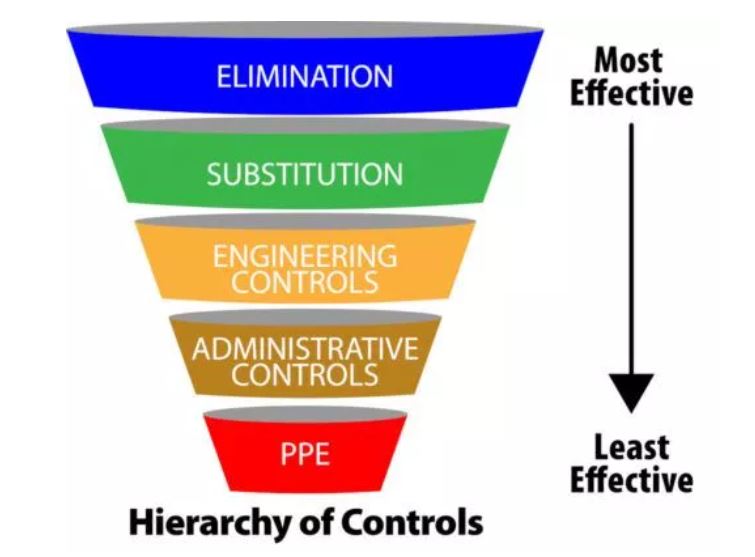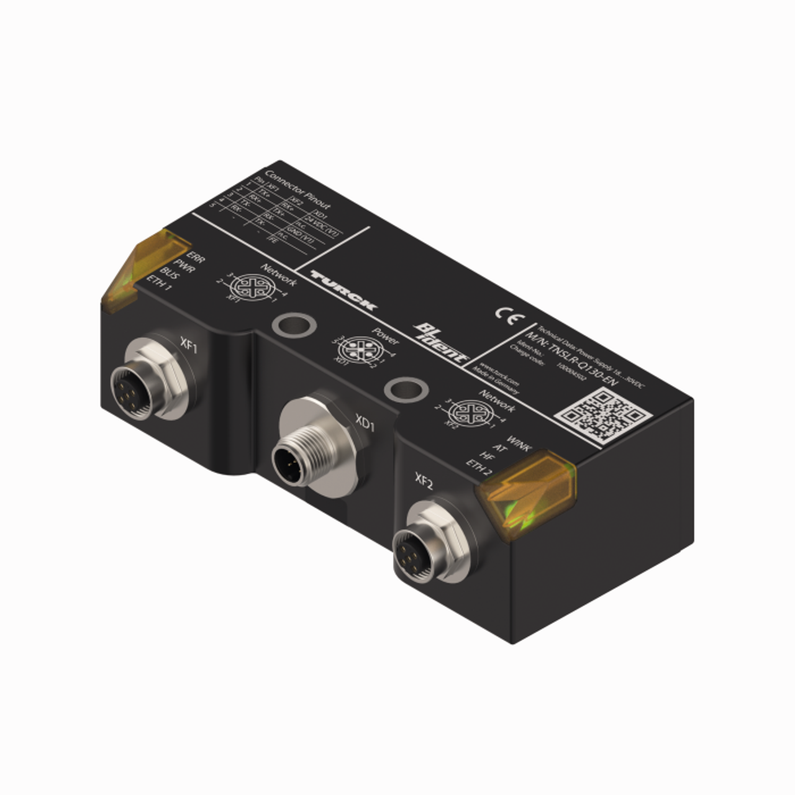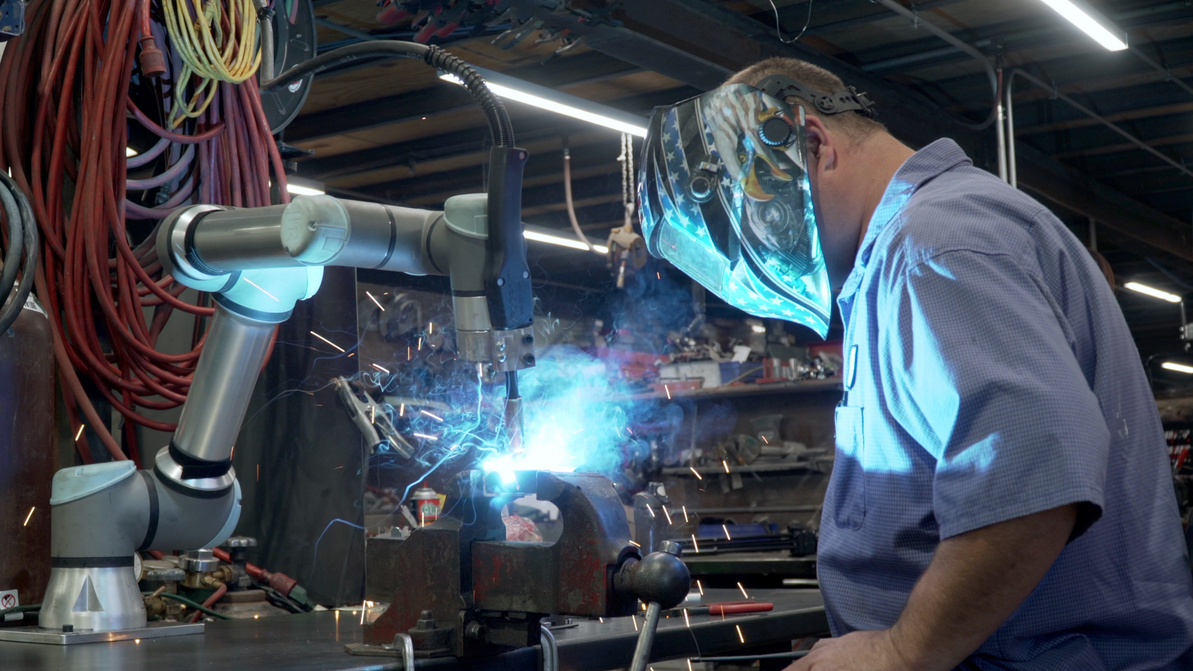A Layered Approach to Industrial Automation Safety
Industrial automation safety design and execution involve many factors. In order to assess the situation and choose the best design course, trained specialists should conduct a safety audit prior to planning for any safety-related systems because safety standards and laws change over time.
A successful industrial automation safety plan needs a multi-faceted strategy that combines the best products, design principles, and operational training. A risk assessment is the first step in creating a safe workplace; after identifying possible problems, the focus shifts to reducing risks through various levels of mitigation. The most efficient ways to protect workers are guided by a hierarchy of engineering and administrative restrictions.
Even though their primary responsibility does not lie in the particular design of safety systems, every member of the project and operation teams benefits from having a working knowledge of the pertinent safety concepts. It's crucial to comprehend the most frequently discussed safety design issues in order to provide personnel with the overview information they need.
The design of the automation systems definitely affects safety for any equipment that uses industrial automation. The concept of safe design that safeguards workers, on the other hand, encompasses both the physical characteristics and intended use of any equipment in question.

The phrase "hierarchy of controls" does not refer to real-time controls; rather, it describes the actions users should take to reduce the risks that every piece of equipment or installation presents. There are frequently numerous possible actions that can be taken in some combination with one another.
1 - Elimination
Elimination, or eradicating the potential hazard, is the best and most efficient risk mitigation approach. Unfortunately, most devices and processes cannot be designed in a way to completely eliminate all potential hazards, thus most of the time this is not an option. But designers should constantly take elimination into account.
2 - Substitution
Even if a risk cannot be completely removed, it can be possible to substitute a less dangerous or less frequently accessed risk in its place. This isn't always doable. For instance, there might be a chemical that is safer in terms of flammability or toxicity when it comes to equipment that uses chemicals. Even if the safer chemical is more expensive, it is frequently worthwhile to invest in it because it results in better working conditions and fewer accidents.
3 - Engineering Controls
While it is always important to investigate the first two steps, the reality is that for modern automated equipment the next step of applying engineering controls is often where most risk mitigation will be accomplished. Engineering controls can be simple or complex, and they may take many forms.
Physical: Safety fencing is at the top of the list of automation system safety components. In order to provide for easy operator access to crucial areas within the cell, safety fence must be developed with operator safety and functionality in mind. Safety fence protects operators from unintentionally reaching in.
Sensors: There are numerous sensors that can identify hazardous situations or that users can activate to signal and reduce a hazard. These include light curtains, limit switches, emergency stop (e-stop) buttons, e-stop pullcords, and others. If someone tries to enter a cell, a sensor may tell the cell to halt. Similar to safety mats, area scanners can also be set to slow down or stop the machine if an operator is nearby.
Interlocks: Some safety sensors are interlocking, which allows users to lock them shut so that they cannot access the linked equipment until it is secure.
Removing energy: Safety relays or safety controllers can be used to connect sensors and interlocks, cutting off power to motors, actuators, and any other equipment that might otherwise endanger users. Pneumatic and even hydraulic energy are two of the more frequently overlooked kinds of energy, along with electrical mains power and electrical device power. Sensors can be built as standalone devices or as components of more powerful hardwired relay or digital safety controller circuits. They can also be wired to remove energy. Safety controllers are cutting-edge digital devices that can connect with higher-level systems and have extensive software configuration capabilities.
Stop kinetic motion: When an e-stop occurs, some physical systems need extra care to keep from moving long after the energy is gone. A quick-dump valve may be required in pneumatic circuits to release pressure from cylinders that might otherwise move. Mechanical stoppers may be required for apparatus like vertical presses or shears in order to stop movement brought on by gravity following an e-stop. Brakes may be required by motor-driven mechanicals to halt rotating motion following an e-stop.
Software: Software that enables us to change the robot's work envelope has been created by industrial robot manufacturers like Universal Robots. We can change the envelope to make our robot cells smaller and to safely remove the fencing in many cases. Additionally, it makes it simple for the operators to interact with the robot utilizing extra safety equipment like light curtains, area scanners, and safety mats when required.
4 - Administrative Controls
It's crucial to handle the human factor after the previous procedures have been implemented. This includes any personnel involved in the equipment's design, engineering, maintenance, contractors, visitors, or any personnel who may be in the vicinity or working with the equipment.
5 - Personal protective Equipment (PPE)
PPE includes safety glasses, earplugs, respirators, safety toe boots, gloves, and similar items are commonplace in industrial environments. More sophisticated fall protection devices and the necessary training are required in some circumstances. Despite being essential for worker safety, these measures are at the bottom of the hierarchy of controls and shouldn't be seen as mitigating recognized hazards since they are a last resort. The usage of PPE also necessitates constant worker effort.
Benefits of Industrial Automation Safety
There are several ways a manufacturing company may benefit from improved automation safety.
Improved Morale
Employees now have more time to work on tasks that call for higher-level thinking as automation does the grunt job. Removing employees from a hazardous setting demonstrates that the business sees them as valuable assets whose welfare is a top priority.
Cost Reduction
According to the Occupational Safety and Health Administration of the U.S. Department of Labor, firms spend nearly $170 billion annually on injuries and illnesses. Additionally, according to the Occupational Safety and Health Administration of the U.S. Department of Labor, businesses can save these expenditures by 20% to 40% by merely enhancing safety protocols.
Higher Efficiency
Automation often produces uniform quality, moves more quickly, and reduces waste. The cost of maintenance is far lower than continuing to pay for the current procedures, even though you may have to pay a big price up front.
More Competitive Advantage
Automation gives businesses a competitive edge by increasing output while maintaining safety and efficiency.
Developing secure industrial machinery, systems, and automation is a continuous process. It has a continuous life cycle instead. Additionally, more than one environmental health and safety (EHS) officer is accountable for safety. Safe designs and operations are in the best interest of the entire team. Risk assessment, mitigation, and validation are all tasks that should be handled by a team. Another suggestion is adding some checks and balances, such using distinct people to handle the safety engineering and the validation. The team gains additional awareness as a result, and things may now be seen from a different angle.
To create safe industrial designs, numerous engineering factors and tools are needed. Team members from all corporate roles can browse our website to see a wide choice of items that can be used to provide additional levels of safety to help with these projects. Contact us for an industrial automation safety consultation with your team today.
Sources: https://www.controleng.com/articles/implementing-a-hierarchy-of-automation-safety/; https://www.mwes.com/benefits-of-increasing-worker-safety-through-automation/ ; https://www.bastiansolutions.com/blog/improve-your-automation-system-safety-with-these-4-components/
Recent Posts
-
Introducing the Turck Q130 HF Read/Write Head: Revolutionizing RFID Data Management
In today's fast-paced industrial landscape, efficiency and accuracy are paramount. The ability to se …Apr 30th 2024 -
Using Scan Tunnels to Track, Sort and Route Warehouse Packages
If you’re using conveyor lines to move products, packages and shipments through your warehouse, the …Apr 17th 2024 -
Embracing Collaboration: How Universal Robots Transformed DeAngelo Marine Exhaust
When the welding robots made their debut at DeAngelo Marine Exhaust, there was a mix of excitem …Apr 11th 2024




